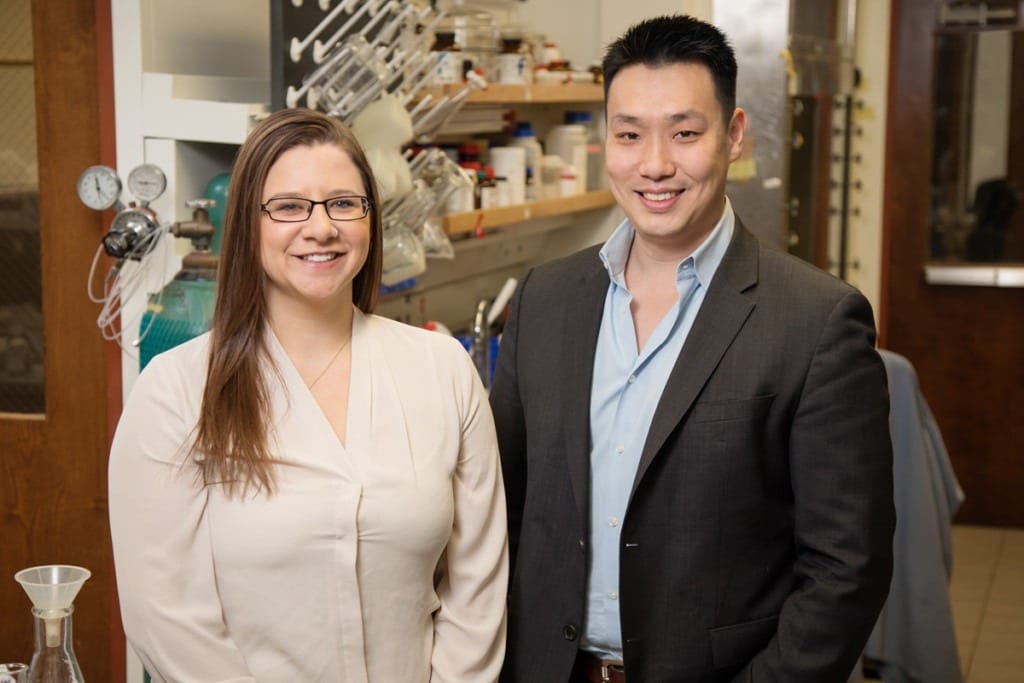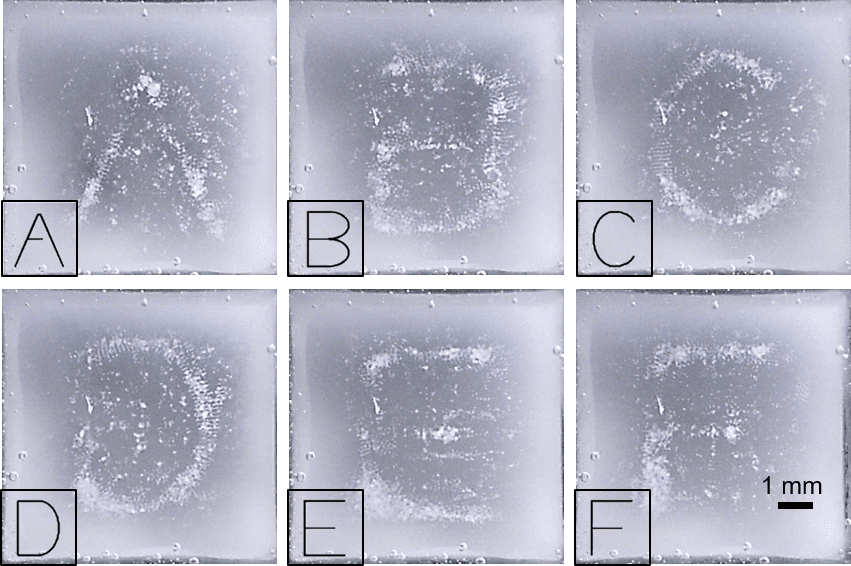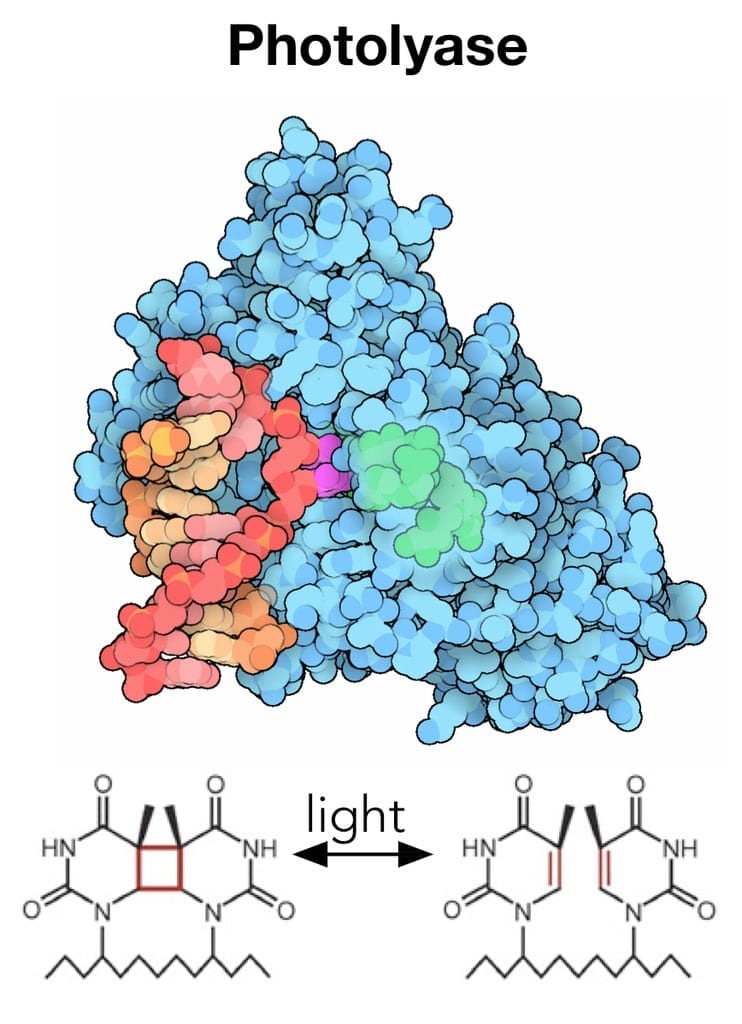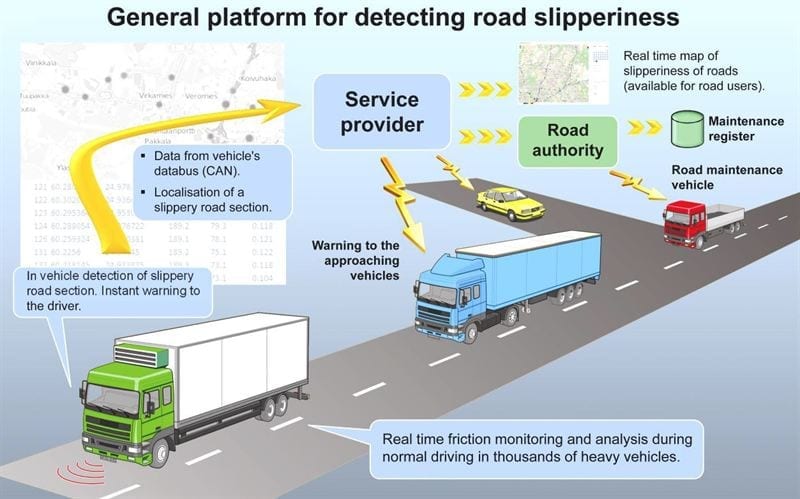
Illinois graduate student Hailey Knox and chemistry professor Jefferson Chan developed a photoacoustic molecular probe that activates in tissues low in oxygen, which could lead to better diagnosis and treatment of cancer, stroke and blocked or narrowed blood vessels.
Photo by L. Brian Stauffer
Areas of hypoxia, or low oxygen in tissue, are hallmarks of fast-growing cancers and of blockages or narrowing in blood vessels, such as stroke or peripheral artery disease. University of Illinois researchers have developed a way to find hypoxic spots noninvasively in real time.
The researchers developed an oxygen-sensitive molecular beacon that emits ultrasound signals in response to light, a process called photoacoustic imaging – a less invasive, higher resolution and less costly method than the current clinical standard, which uses radioactive molecules and positron emission tomography scans. In a paper published in Nature Communications, the researchers demonstrated the probe’s ability to image hypoxic tumors and constricted arteries in mice.
“We could give a doctor a three-dimensional, real-time view into the tissue to guide surgical procedures and treatment plans,” said chemistryprofessor Jefferson Chan, the leader of the study. Graduate student Hailey Knox and bioengineering professor Wawrzyniec Lawrence Dobrucki were co-authors of the paper.
“The ability to detect this in a way that doesn’t require surgery or doesn’t rely on indirect methods is really powerful, because you can actually see it as it’s developing,” Chan said.
Current methods for detecting hypoxia in tissue can only identify chronic hypoxia, and thus cannot help doctors find aggressive cancers or acute conditions like a stroke that require immediate intervention, Chan said. Such methods are limited to invasive procedures involving large electrode needles or indirect imaging with radioactive probes, which has the added challenges of off-target activation and interference.
The molecular probes Chan’s group developed only become active when oxygen is lacking. When excited by light, they produce an ultrasound signal, allowing direct 3-D imaging of hypoxic areas. They tested the system on cell cultures, and then in live mice with breast cancer and mice with constricted arteries in their legs.
“The system that we used in this study is a preclinical system for animals. However, in a clinical setting, you can take a regular ultrasound machine and equip it with a light source – you can buy LEDs for around $200 that are powerful enough and safe for clinical applications,” Chan said. Physicians would administer the photoacoustic molecules to the patient, either by injecting into a vein or directly to a tumor site, then use the modified ultrasound machine to visualize the area of interest.
The researchers found that their photoacoustic method could find hypoxia mere minutes after a mouse’s artery was constricted, showing promise for quickly finding stroke sites or blood clots in deep tissue. In the mice with cancer, the probes enabled detailed, 3-D ultrasound imaging of hypoxic tumors.
See a video of a 3-D rendering of a hypoxic tumor.
“We know that a lot of tumors are hypoxic, so many new treatments have been developed that become activated in oxygen-deficient conditions. But they have been inconsistent in clinical trials, because not all tumors are hypoxic,” Chan said. “This gives scientists and physicians a way to noninvasively look inside tumors and determine whether a patient’s tumor is hypoxic and they would be a good candidate for a new drug. If the tumor doesn’t look very hypoxic, they should go into a different treatment plan.”
Another advantage is the low cost of producing the molecules and their long shelf life, the researchers said. They can stay stable for years, whereas radioactive molecules must be used soon after manufacturing and require special training for use.
Chan’s group is exploring other types of photoacoustic molecules that could image other conditions. For example, they are working on probes that can detect specific cancers so they can find any places where cancer has spread or metastasized in a patient’s body.
“Not only can you detect a cancer and discover its properties, but it has a lot of avenues for patient care. We can look at the whole iceberg instead of the tip of the iceberg,” Chan said.
Learn more: Molecular beacon signals low oxygen with ultrasound
The Latest on: Photoacoustic molecules
[google_news title=”” keyword=”photoacoustic molecules” num_posts=”10″ blurb_length=”0″ show_thumb=”left”]- News tagged with drug moleculeson April 24, 2024 at 5:00 pm
For most human proteins, there are no small molecules known to bind them chemically (so-called "ligands"). Ligands frequently represent important starting points for drug development but this ...
- Muyinatu Bell receives 2024 Alan T. Waterman Awardon April 23, 2024 at 5:00 pm
Bell was recognized for her pioneering interdisciplinary research spanning photoacoustic and ultrasound imaging, including advancements in coherence-based beamforming, photoacoustic-guided surgery, ...
- Individual polyatomic molecules are trapped in optical-tweezer arrayson April 23, 2024 at 5:00 pm
Three’s company: researchers at Harvard University have trapped individual triatomic molecules. (Courtesy: iStock/Emilija Randjelovic) Individual polyatomic molecules have been trapped in arrays of ...
- Did Molecules Vital to Development of Life Form via Graphitisation?on April 19, 2024 at 12:44 am
It has long been debated how the seemingly fortuitous conditions for life arose in nature, with many hypothesises reaching dead ends. However, researchers at the University of Cambridge have now ...
- 'Neutronic molecules': Study shows neutrons can bind to quantum dotson April 3, 2024 at 7:16 am
The team calls the newly discovered state an artificial "neutronic molecule." These neutronic molecules are made from quantum dots, which are tiny crystalline particles, collections of atoms so ...
- Movement of molecules across the cell membraneon April 30, 2023 at 9:57 pm
This takes place when molecules diffuse across the cell membrane by travelling through specific transport proteins. It occurs down a concentration gradient - molecules move from an area of high to ...
- Photoacoustic-920 (IMAGE)on April 12, 2023 at 10:10 am
Mechanism of photoacoustic remote sensing. Disclaimer: AAAS and EurekAlert! are not responsible for the accuracy of news releases posted to EurekAlert! by contributing institutions or for the use ...
- Dr Michael Hippleron January 20, 2023 at 5:13 am
The understanding of intramolecular primary processes in polyatomic molecules at the fully quantum dynamical ... For this purpose, I set up a very sensitive stimulated Raman experiment with ...
- Heat- Energy on the Moveon December 7, 2022 at 11:42 pm
Heating a substance makes its atoms and molecules move faster. This happens whether the substance is a solid, a liquid, or a gas. It’s not easy to see it happen in a solid but let’s try it for a ...
- Lesson 6.2 - Atoms can be Rearranged to Make Different Moleculeson November 12, 2021 at 9:50 pm
Matter is made up of very small parts called atoms. Atoms can combine in different numbers and in different ways to make different molecules. Atoms and molecules make up all of the different ...
via Google News and Bing News










